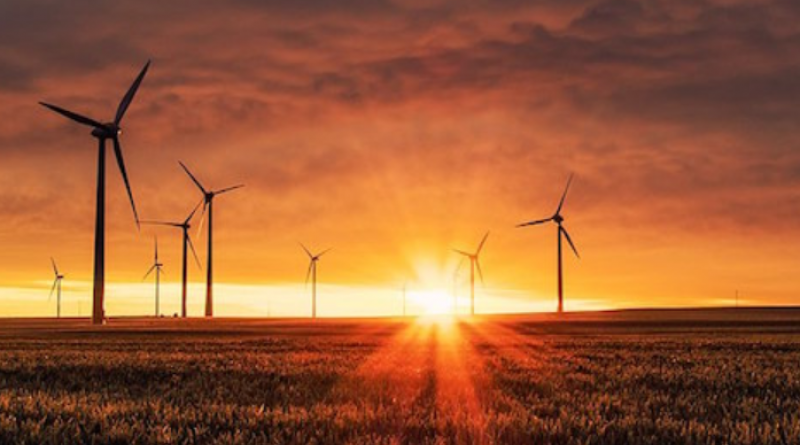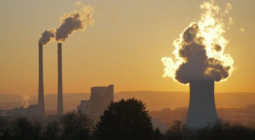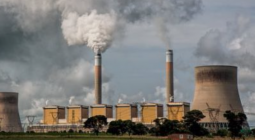BREAKING:IEA Urges Faster Fossil Phaseout, More Renewables Investment to Keep 1.5 C Within Reach

While the world’s fossil fuel use could peak in the next few years, countries’ climate pledges to date “cover less than 20% of the gap in emissions reductions that needs to be closed by 2030 to keep a 1.5°C path within reach,” the International Energy Agency declared this morning, in a breakthrough edition of its annual World Energy Outlook.
“The world’s hugely encouraging clean energy momentum is running up against the stubborn incumbency of fossil fuels in our energy systems,” Executive Director Fatih Birol said in a release. “Governments need to resolve this at COP 26 by giving a clear and unmistakeable signal that they are committed to rapidly scaling up the clean and resilient technologies of the future. The social and economic benefits of accelerating clean energy transitions are huge, and the costs of inaction are immense.”
“The new energy economy will be more electrified, efficient, interconnected, and clean,” World Energy Outlook 2021 states. “Its emergence is the product of a virtuous circle of policy action and technology innovation, and its momentum is now sustained by lower costs,” with solar and wind now standing as “the cheapest available source of new electricity generation” in most parts of the world.
And yet “every data point showing the speed of change in energy can be countered by another showing the stubbornness of the status quo,” the agency adds. “For all the advances being made by renewables and electric mobility, 2021 is seeing a large rebound in coal and oil use. Largely for this reason, it is also seeing the second-largest annual increase in CO2 emissions in history.”
To shift those trends, the reports calls for:
• A doubling of countries’ current commitments to deploy photovoltaic solar and wind, along with a “huge buildout” of grid infrastructure, greater flexibility in electricity systems, more reliance on hydropower, a rapid coal phaseout, electrification of transportation and space heat, and “use of nuclear power where acceptable”;
• A “relentless” focus on energy efficiency, making better use of materials and shifting behaviours to speed the reduction in the amount of energy the global economy uses for each unit of output it produces;
• Rapid methane reductions as a “key tool to limit near-term global warming”;
• A “big boost” to clean energy innovation, focused on technologies like hydrogen, low-carbon fuels, and carbon capture, utilization, and storage—particularly to drive emission reductions in energy-intensive industries like steel and cement, and in long-haul transport. While “all the technologies needed to achieve deep emissions cuts to 2030 are available,” the IEA says, nearly half of the reductions required by 2050 “come from technologies that today are at the demonstration or prototype stage.”
To close the gap between their climate pledges to date and a real pathway to net-zero, the IEA says countries must boost annual investments in clean energy and infrastructure to nearly US$4 trillion per year, with 70% of it spent in emerging markets and developing countries.
The IEA says it produced this year’s WEO a month early, in time to provide a roadmap for stronger emission reduction commitments at this year’s United Nations climate conference, COP 26, beginning October 31 in Glasgow, Scotland.
OIL’S INEVITABLE DECLINE
Like past editions of the IEA’s World Energy Outlook, this year’s report sets out a series of scenarios for the future of energy supply and demand. This year, for the first time, all the scenarios show oil consumption falling through 2050.
But the differences among those pathways “are stark, highlighting the need for more ambitious commitments if the world is to reach net-zero by mid-century,” the IEA warns.
Under the Net Zero Emissions by 2050 Scenario that the agency first published in May, oil consumption falls to 25 million barrels per day, down from about 100 million barrels today. But based solely on governments’ commitments to dates, the Announced Pledges Scenario shows consumption of 75 million barrels per day in 2050—even if all the countries keep all their promises.
All the IEA’s scenarios show natural gas consumption rising over the next five years—but after that, it either continues to increase, holds relatively steady, or falls slightly below 2020 levels by 2050. For several years, researchers have identified fossil gas as a “clear culprit” in largely unmeasured emissions of methane, a relatively short-lived greenhouse gas that is about 80 times more potent a warming agent than carbon dioxide over the 20 years when humanity will be scrambling to get climate change under control.
The IEA scenarios show coal declining by 10 to 55% by 2030, depending on how quickly electricity producers abandon the climate-busting fuel. Policies countries have already announced would retire coal plants at double the rate of the last decade, but the IEA’s net-zero scenario would double that pace again, to nearly 100 gigawatts (100 billion watts) of coal plant closures per year.
The pace of the phaseout will depend on four factors: no new coal plant approvals unless they are “abated” by expensive carbon capture technologies, reducing emissions from the 2,100 gigawatts of coal facilities still in operation around the world, sufficient investment to replace coal that would otherwise have been burned, and “managing the economic and social consequences of change,” the report states. China alone could eliminate 190 gigawatts of new coal capacity and save 20 billion tonnes of carbon dioxide emissions by 2050 with its recent promise to end support for overseas coal projects.
But so far, the sum total of countries’ announced pledges would deliver only a 40% emissions cut by 2050, the IEA says. Oil consumption peaks in 2025, but remains mostly steady through 2050. In 2018, the Intergovernmental Panel on Climate Change called for a 45% emissions reduction by 2030 to give humanity the best chance of averting a runaway climate emergency.
MANAGING THE TRANSITION
The report calls for close attention to the job and community impacts of the emerging coal phaseout.
“Managing the phaseout of coal depends on early and sustained engagement by governments and financial institutions to mitigate the impacts on affected workers and communities, and to allow for the reclamation and repurposing of lands,” the report states. While “many more new jobs are created” in the energy transition, they’re “not necessarily in the same places where jobs are lost. Skill sets are not automatically transferable, and new skills are needed.”
That puts the onus on governments to “manage the impacts carefully, seeking transition pathways that maximize opportunities for decent, high quality work and for workers to make use of their existing skills—and mobilizing long-term support for affected workers and communities.”
The IEA also points to the risk of a “volatile period” for energy markets and prices, but says those price shocks will be considerably less painful for households that are less dependent on oil and gas. It points to trade policy, demand for critical minerals, and geopolitics as areas that will need close attention as the transition unfolds.
But like many other reports before it, World Energy Outlook 2021 says the costs of inaction are far higher.
“We estimate that around one-quarter of global electricity networks currently face a high risk of destructive cyclone winds,” the report states, while 10% of power grids and coastal refineries face severe coastal flooding, and one-third of fossil-fuelled power plants consume cooling water in areas facing drought. The IEA also points to the 90% of the world’s population breathing polluted air and the millions of premature deaths that result each year.
THE IEA’S EVOLVING POSITION
What makes World Energy Outlook 2021 an important marker in the shift off carbon is the long distance the IEA has travelled to reach this point.
Routinely described by the agency as “the gold standard of energy analysis”, the World Energy Outlook has received scathing criticism in the past for overstating the future importance of fossil fuels, consistently underestimating the uptake of renewable energy, and failing to align its energy projections with the goals of the 2015 Paris Agreement. For years, the agency’s projections have been used to justify hundreds of billions of dollars in high-carbon investments, allowing multinational fossil companies to sustain the fantasy that demand for their product will increase through 2040 or beyond.
But this year’s WEO comes on the heels of a net-zero pathways report in May in which the agency called for no new investment in coal, oil, or gas development and projected oil demand falling 75%, gas consumption 55%, by 2050.
“Beyond projects already committed as of 2021, there are no new oil and gas fields approved for development in our pathway, and no new coal mines or mine extensions are required,” the IEA stated at the time. “The unwavering policy focus on climate change in the net-zero pathway results in a sharp decline in fossil fuel demand, meaning that the focus for oil and gas producers switches entirely to output—and emissions reductions—from the operation of existing assets.”
In the months since, climate advocates have been watching anxiously and advocating loudly for the IEA to put its net-zero scenario at the centre of this year’s WEO. Now they have their answer.
“Today’s report is a step change for the International Energy Agency,” David Tong, global industry campaign manager at Oil Change International, said in a release. “The days of the WEO being used to justify dangerous investments in fossil fuel expansion must be over.”
Now, “the challenge is set for governments and investors,” Tong added. “Big oil and gas companies like Shell and BP have relied on previous, less ambitious IEA scenarios to justify inadequate climate plans and pledges. That hiding place is now gone.”
“We’ve seen some governments and fossil fuel companies dismiss the IEA’s 1.5°C scenario as ‘unrealistic,’ yet there’s no greater delusion than thinking we can solve the climate crisis by extracting more and more fossil fuels,” said Oil Change Research Co-Director Kelly Trout. “Governments that have relied on the WEO in the past to justify their energy investments have no credibility in ignoring the IEA’s guidance now, when it’s finally consistent with the 1.5°C limit they agreed to in Paris.”
13 October 2021
The Energy Mix




